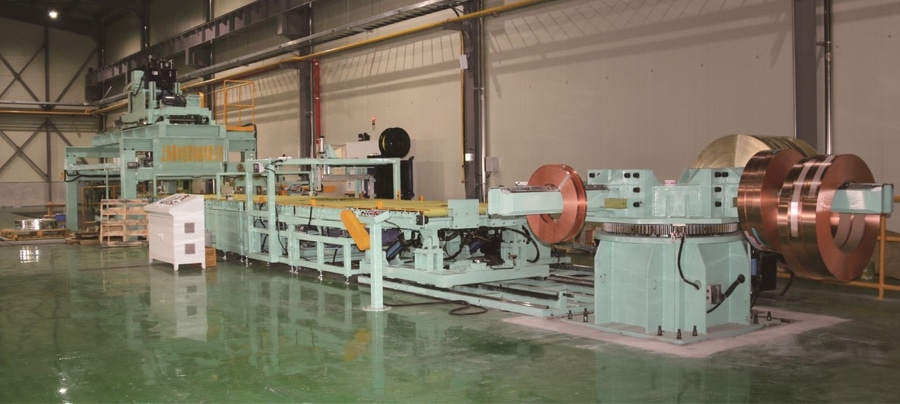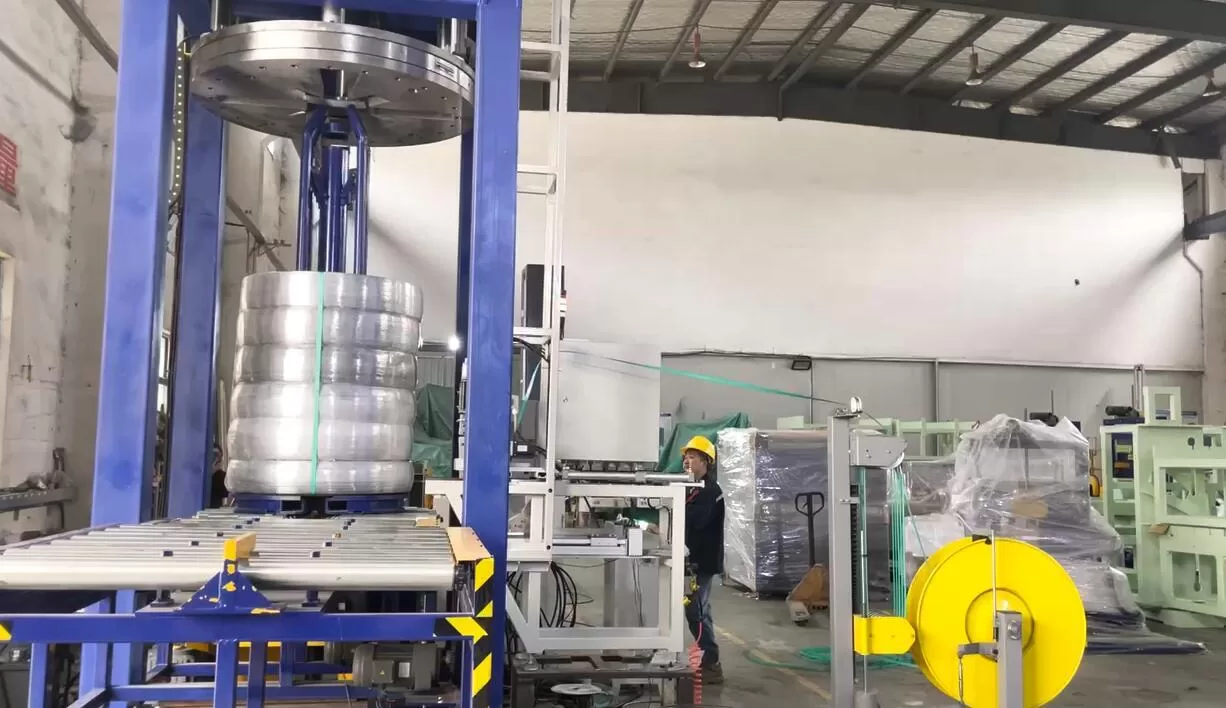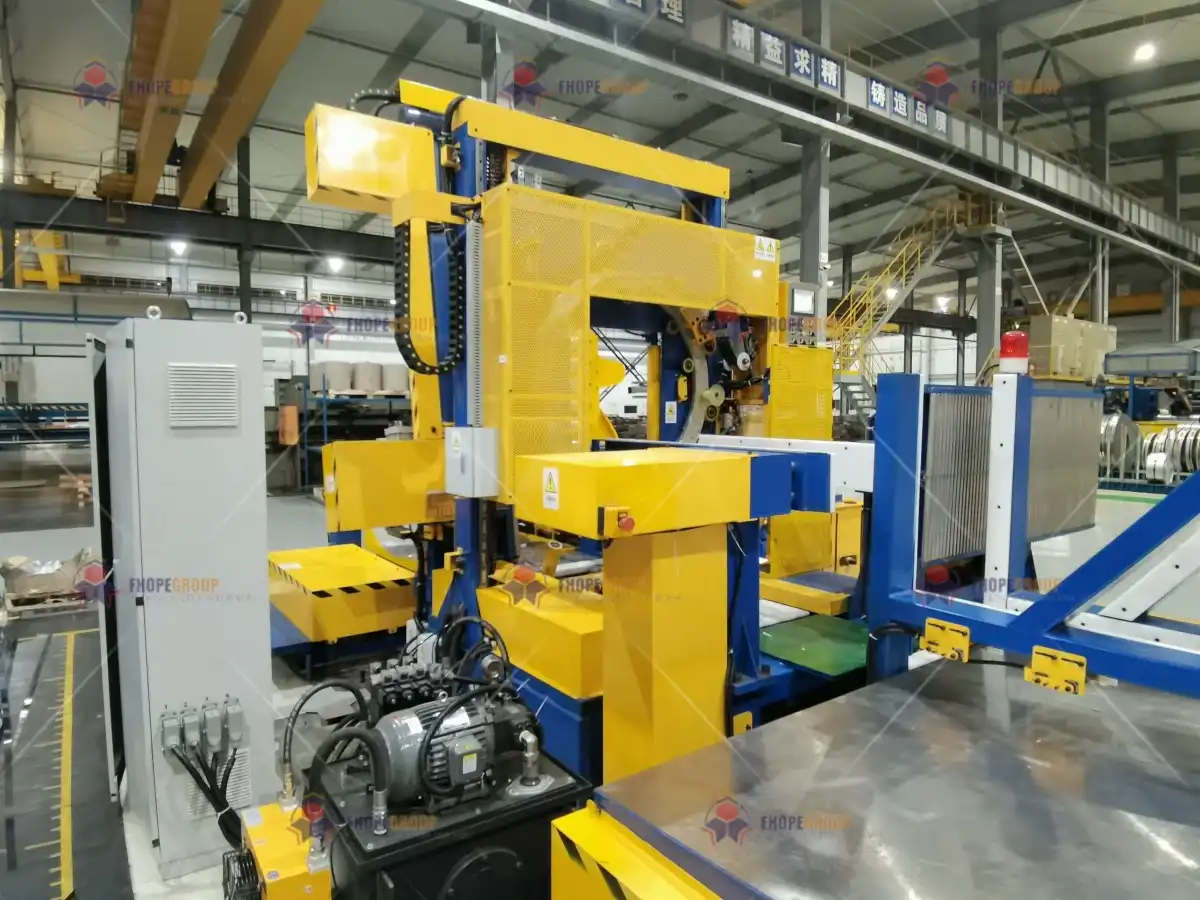Are you running a steel mill? If so, you know the daily pressures. Energy prices are unpredictable. Finding and retaining skilled labor is a constant challenge. Your packaging line, the final step before your product reaches the customer, might be a hidden bottleneck. It can cause delays, increase your operational costs, and create unnecessary stress. Imagine a single breakdown on an old packaging machine. It can halt your entire production line. The costs pile up fast. You have downtime, wasted materials, and maybe even penalties for late deliveries. You know there must be a better way. But investing in new technology can feel like a huge risk. In Italy, a country famous for its high-quality steel, producers from the industrial north of Milan to the southern hub of Taranto are facing these same problems. They are turning to automation. It is not just an upgrade for them. It is a core strategy for survival and growth. I have seen this transformation with my own eyes.
The main drivers for automation in Italy’s coil packaging industry are the urgent needs to fight rising labor and energy costs, achieve higher throughput with consistent quality, and strategically integrate packaging lines into plant-wide digital systems for better, data-driven decisions.

This shift is not just about replacing people with robots. It is a basic change in how Italian steel producers view their entire operation. It is about building a more resilient and competitive business. As an engineer who has spent his entire career in this field, I want to share what I've learned from these Italian mills. Let's break down the specific reasons pushing them toward automated coil packaging. You can learn a lot from their journey.
How is Automation Slashing Italy's Soaring Labor and Energy Costs?
Your monthly budget for operations is always under pressure. I understand this. Labor costs keep going up. Energy bills are a constant source of uncertainty. Manual or semi-automatic packaging processes use a lot of both. Every time a worker applies a strap by hand, every forklift movement, every minute your wrapping machine runs when it could be idle—it all adds up. You are paying for wasted motion and wasted energy. This directly eats into your profit margins. Italian steel mills are finding that a fully automated packaging line does more than just wrap coils. It is a complete system designed for maximum efficiency. It directly cuts down on the two biggest operational expenses: labor and energy.
Automation slashes these costs in Italy by replacing repetitive, labor-intensive tasks with precise, energy-efficient machines. Automated systems can run 24/7 with very little human supervision, which reduces the wage bill. They also use smart sensors and variable speed drives. This means they only use energy when they are actively working on a coil. This greatly lowers the power needed for each package.

Let's dive deeper into how this works in practice. It is not magic; it is just smart engineering. I want to show you the specific ways automation saves money.
A Closer Look at Labor Cost Reduction
The most obvious saving is in manpower. A typical semi-automatic line might need four or five operators per shift to handle everything: placing the coil, strapping it, applying protective wrapping, and moving it to storage. An automated line reduces this to just one supervisor. This person oversees the whole process from a control panel. They are not doing the heavy, repetitive work. I remember a client in Brescia. His plant ran three shifts with four workers each, just for packaging. That's twelve people. After my team at SHJLPACK installed a fully automated line, he was able to reassign ten of those workers. They moved to more skilled jobs in quality control and machine maintenance. The return on his investment was clear in less than 18 months. The savings also come from reduced training costs and fewer mistakes. Human error in manual strapping can lead to damaged coils or unsafe packages. Automation delivers the same result every time, reducing waste and customer complaints.
Deconstructing Energy Savings
Energy efficiency is built into the design of a modern automated line. This directly tackles the challenge of volatile energy costs. The biggest energy users on a packaging line are the motors. In older systems, these motors often run constantly, even when no coil is present. Our modern lines use Variable Frequency Drives (VFDs). A VFD adjusts the motor's speed to match the exact need of the moment. It ramps up to wrap a coil and slows down to a near-stop in between. The system also has a "sleep mode." If no coil enters the line for a few minutes, the entire system powers down to a low-energy state and wakes up instantly when the next coil arrives. These features might seem small, but they add up to significant savings.
Here is a simple comparison:
| Feature | Traditional Semi-Auto Line | SHJLPACK Automated Line | Impact |
|---|---|---|---|
| Manpower | 4-5 operators per shift | 1 supervisor per shift | ~75% labor cost reduction |
| Energy Use | Constant motor operation | VFDs, sleep modes, IE3 motors | 20-30% energy savings per coil |
| Throughput | 15 coils/hour (approx.) | 30+ coils/hour | Doubles production capacity |
| Human Error | High (improper strapping/wrapping) | Minimal (consistent quality) | Reduced material waste and claims |
Why are Italian Steel Mills Demanding Integrated Systems, Not Just Machines?
You have probably bought a new machine for your factory before. It does its job well, but it often operates as an "island." It does not communicate with your production planning software. It does not talk to your shipping department. Getting data from it is a manual process that involves someone writing down numbers or printing a report. This creates data silos and major inefficiencies. Your production manager is guessing when coils will be ready for the warehouse. Your quality control team has to manually track the packaging status of each coil. The entire process is disconnected and reactive. You are always catching up. Leaders of Italian steel mills understand this problem deeply. They are not just buying a strapping machine or a wrapping machine anymore. They are investing in a fully integrated packaging system. This system acts as a crucial, intelligent link in their entire production chain.
Italian steel mills demand integrated systems because standalone machines create bottlenecks and critical information gaps. An integrated system connects the packaging line directly to the plant’s Manufacturing Execution System (MES). This allows for a smooth flow of data, real-time tracking of every coil, automated processing of packaging instructions, and much better logistical planning from the moment a coil is produced to the moment it is loaded onto a truck.

Let's explore what "integrated system" really means in the steel industry. It is much more than just connecting a few machines with a network cable. It’s about creating a single, intelligent entity that works in harmony with your business goals.
The Flow of Information: From Mill to Truck
Imagine this journey. A hot-rolled steel coil finishes its cooling process and arrives at the packaging line. A scanner automatically reads its unique coil ID. This ID is sent to your plant's MES or ERP system. The system instantly sends back a complete set of instructions to the packaging line. It says, "This coil is for customer X. It requires four radial straps, circumferential wrapping with VCI paper, and a specific label format." The automated line executes these instructions perfectly without any human input. Once the coil is packaged, the line's control system does two things. First, it updates your Warehouse Management System (WMS) with the coil's status: "Packaged and ready." It also sends the final, precise weight and dimensions. Second, this data can trigger your ERP system to automatically generate the packing list and bill of lading. This entire process is seamless and error-free. I had a project near Taranto where the plant manager was constantly dealing with shipping errors. The wrong coils were being sent to the wrong customers. By integrating their packaging line with their SAP business system, we ensured every label was auto-generated with the correct data from the sales order. Shipping errors dropped to almost zero within a month.
The Benefits Beyond Data
This integration transforms how different departments work. It breaks down the walls between production, quality, and logistics. Everyone is working with the same real-time information. This leads to tangible business advantages.
| Aspect | Standalone Machine | Integrated System | Business Advantage |
|---|---|---|---|
| Order Processing | Manual data entry for packaging | Automatic instructions from MES/ERP | Eliminates typos and speeds up the process. |
| Inventory Tracking | Manual scans, delayed updates | Real-time, automatic updates to WMS | 100% accurate stock levels for better planning. |
| Quality Control | Paper records, difficult to trace | Digital record linked to each coil ID | Full traceability for quick root cause analysis. |
| Maintenance | Reactive (fix when it breaks) | Predictive (alerts from sensors) | Higher uptime and lower lifetime repair costs. |
What Role Does "Industry 4.0" Play in Modernizing Italian Coil Packaging Lines?
"Industry 4.0" can sound like an empty buzzword. You hear about the Internet of Things (IoT), Big Data, and Artificial Intelligence (AI). But it can be difficult to see how these high-tech concepts apply to the tough, demanding environment of a steel packaging line. Ignoring these technologies, however, means you risk falling behind your competition. Your competitors might be using predictive maintenance to avoid downtime while your team is still reacting to breakdowns. They are optimizing their processes using data that you don't even collect. In Italy's industrial heartland, Industry 4.0 is not just a theory. It is a practical set of tools being used on coil packaging lines every day. It is all about making machines smarter, making processes more visible, and making decisions based on solid data, not guesswork.
Industry 4.0 plays a vital role by embedding IoT sensors and data connectivity directly into the packaging machinery. This allows for the collection of real-time performance data. This data enables predictive maintenance to maximize uptime, data analytics to optimize material use, and remote monitoring for faster troubleshooting and support from anywhere in the world.
Think of Industry 4.0 as the "brain" that powers the modern automated line. It is what elevates a machine from a simple tool to a strategic asset. Let's break down its key parts.
IoT Sensors: The Nervous System of the Machine
In my designs at SHJLPACK, we embed dozens of sensors throughout the packaging line. These are the "nerves" of the system. They constantly monitor critical parameters: the temperature and vibration of a motor, the pressure in a hydraulic or pneumatic system, the tension of the wrapping film, and the force applied by the strapping head. This data is not just for a simple warning light on a control panel. It is streamed in real time to a central control platform. Here is a practical example. A vibration sensor on a strapping head motor detects a tiny, unusual pattern. The system's software, which has learned the motor's normal operating signature, flags this as an anomaly. It does not wait for the motor to fail. It sends an alert directly to the maintenance manager's dashboard. The alert says: "Bearing wear detected in Strapping Head #2. Performance is still 100%, but failure is predicted within 72 hours. Schedule replacement during the next planned stop." This is the core of predictive maintenance. It is a game-changer for plant managers who need to achieve 95% or higher uptime.
Data Analytics: Turning Information into Action
Collecting data is only the first step. The real power comes from analyzing it to find patterns and opportunities for improvement. The system can analyze thousands of packaging cycles. It might discover that coils produced on a certain day require slightly more stretch film to achieve the desired wrapping integrity. This insight can be fed back to the production team to investigate potential issues with the coil's surface or shape. More importantly, this data directly helps in reducing operational costs. For example, by analyzing the tension and pre-stretch data from every cycle, the system can determine the absolute minimum amount of wrapping film needed for a secure package. Shaving just a few grams of film off each coil can add up to saving tons of material and thousands of dollars over a year. This is how you achieve a goal like lowering overall operating costs by 8% or more.
My Insights: How are Italian Producers Meeting Stricter Safety and Environmental Standards with Automation?
As a steel mill owner, you are under constant pressure from all sides. Governments are passing tougher environmental laws. Your customers and your own team demand higher workplace safety standards. A single serious accident or a fine for an environmental violation can damage your company's reputation and your bottom line. An old, manually-operated packaging area is filled with risks. You have heavy coils, constant forklift traffic, and sharp steel strapping. It is an environment where accidents are waiting to happen. At the same time, inefficient machines waste energy and packaging materials, increasing your environmental footprint. This is an area where I have personally seen automation provide the most significant impact. Italian producers are using automated systems not just for efficiency. They are using them as a primary tool to build a safer, greener, and more compliant operation. It is about turning a major challenge into a real competitive advantage.
Italian producers are meeting these stricter standards by using automation to remove workers from hazardous areas. They are replacing manual strapping and handling with guarded robotic systems. Automation also ensures the precise use of materials, which reduces plastic and steel waste. Finally, these systems use energy-efficient components to lower the plant's carbon footprint, directly addressing both safety and environmental compliance.

From my years as an engineer and now as a business owner, I can tell you that a well-designed system treats safety and environmental performance as core design principles. They are not optional add-ons.
Engineering a Safer Workspace
My design process always starts with a thorough risk assessment. Where are the most dangerous points on a packaging line? The coil tilter, the strapping head, the entry and exit conveyors where coils and machinery interact. The first job of automation is to create a physical barrier between people and these hazards. We use robust safety fencing, light curtains, and area scanners. These create a protected, automated cell where the heavy-duty work happens. Human interaction is limited to a safe distance, at a master control panel. Think about the simple act of strapping a coil. Manual strapping with steel bands is one of the most common sources of injury in a steel plant, from cuts to eye injuries. An automated strapping head applies the strap with consistent tension and precision every time, inside a guarded area. It completely eliminates the risk to an operator. I have personally seen how implementing such a system can transform the safety culture on the factory floor.
Building a Greener Packaging Process
This connects directly to the environmental pressures every steel producer faces today. It also addresses the goal of reducing energy consumption. For me, efficient engineering is green engineering. The two go hand-in-hand. Let's look at a simple comparison.
| Environmental Factor | Manual / Semi-Auto Process | Fully Automated System | Result |
|---|---|---|---|
| Material Waste | Inconsistent film/strap use. Over-wrapping is common "just to be safe." | Precise, calculated application. Stretch film pre-stretching up to 300%. | Up to 50% reduction in packaging material waste. |
| Energy Consumption | Machines often run continuously. Older, inefficient motors. | 'Start-on-demand' operation. High-efficiency IE3/IE4 motors. | 10-20% reduction in unit energy consumption. |
| Pollution Risk | Older hydraulic oil systems are prone to leaks, contaminating the floor. | Modern designs prefer clean electric actuators and servo motors. | Reduced risk of soil/water contamination. |
When I talk with clients, I emphasize that these green features are not just for passing an audit. They deliver a hard return on investment. Less material waste means lower purchasing costs. Less energy use means a smaller electricity bill. It is a clear win-win situation.
Conclusion
Automation in Italy’s steel industry is a strategic response to cost pressures, driven by integrated systems and smart technology. It offers a clear path to greater efficiency, safety, and profitability.





